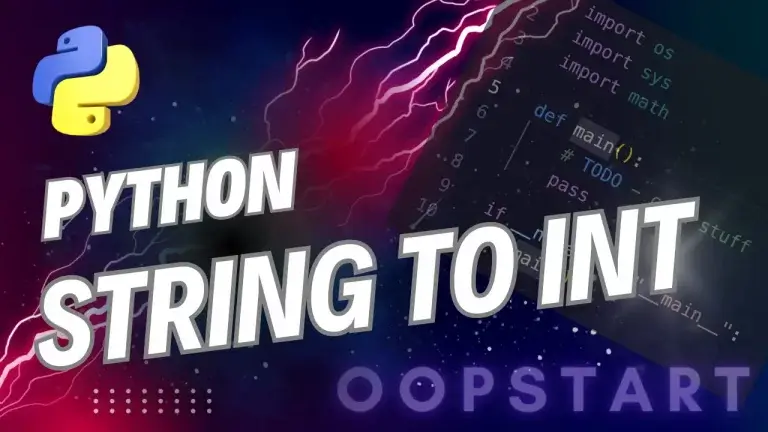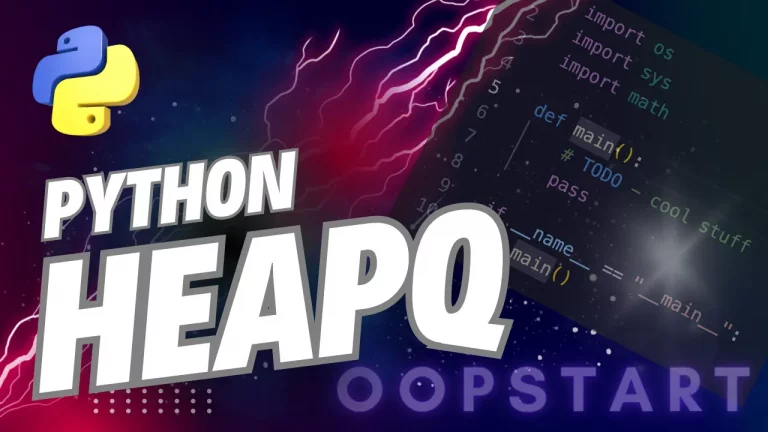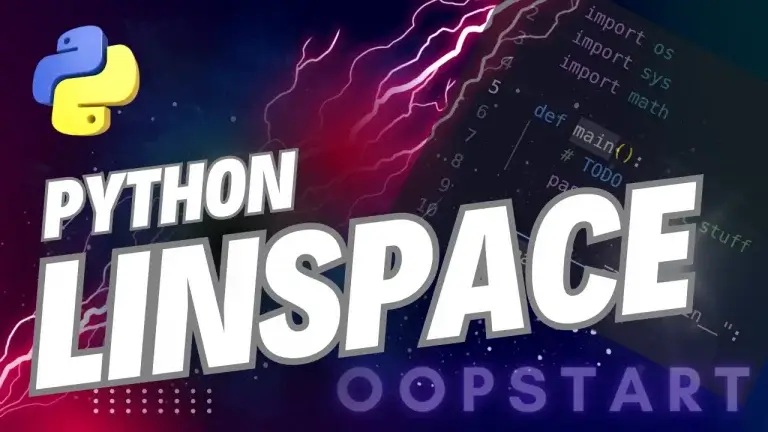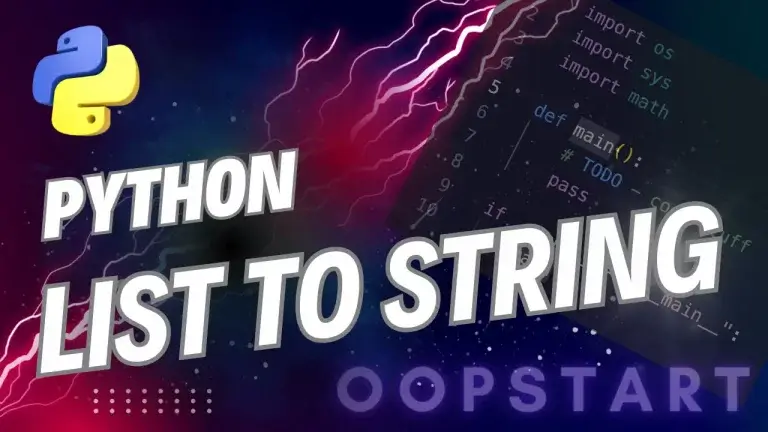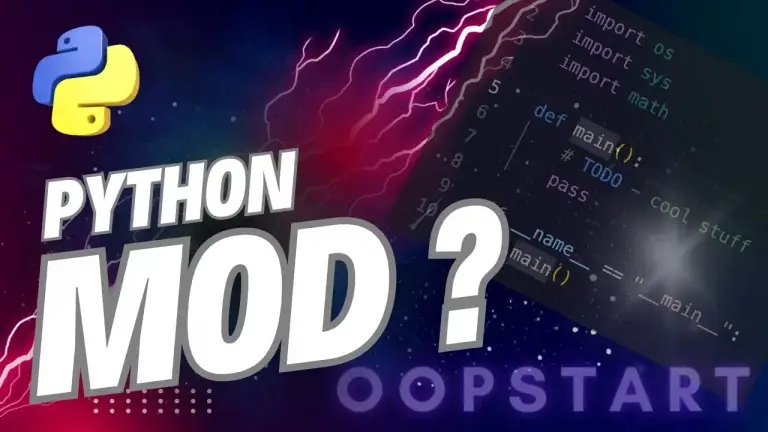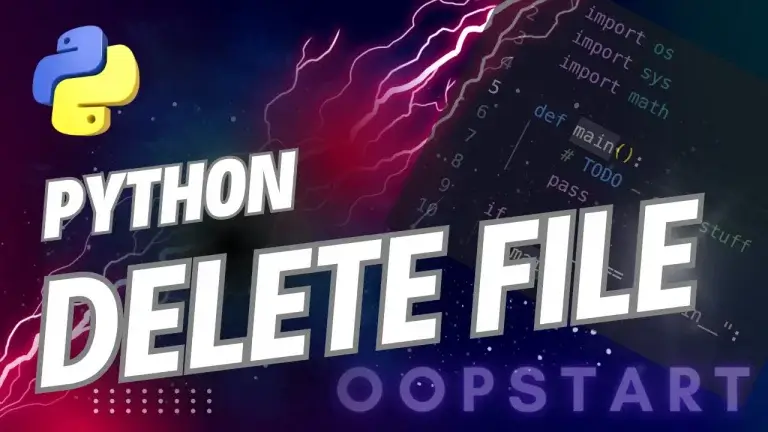Uninstall Python: Comprehensive Guide
Python is one of the most popular programming languages, used for web development, data science, scripting, and more. While many users install and run multiple versions of Python on their machines, there may come a time when you need to uninstall Python — whether it’s to remove an older version, free up space, or resolve conflicts between different versions.
By the end of this guide, you’ll have a clear understanding of how to safely and effectively uninstall Python from your system.
Table of Contents
Reasons to Uninstall Python
Before diving into the uninstallation process, let’s explore some common reasons why you might want to uninstall Python:
- Removing older or conflicting versions: Python may have multiple versions installed on a system, leading to version conflicts.
- Freeing up space: Unused versions of Python or unneeded packages can take up valuable disk space.
- Installing a fresh version: To resolve issues or start with a clean installation, uninstalling the current version and installing a fresh version may be required.
Regardless of the reason, it’s important to follow the correct steps for uninstallation to ensure no leftover files or settings cause issues in the future.
How to Uninstall Python on Windows
Step 1: Uninstall Python Using the Control Panel
Open Control Panel:
- Press the Windows Key and type “Control Panel.”
- Click Control Panel in the search results.
Navigate to Programs:
- In the Control Panel, click on Programs.
- Under Programs and Features, click Uninstall a Program.
Select Python:
- Find the Python version you want to uninstall in the list of installed programs.
- Select the Python version, and click Uninstall.
Follow the Uninstallation Wizard:
- Follow the prompts in the Python uninstallation wizard to remove Python from your system.
Check for Multiple Versions:
- If you have multiple versions of Python installed, repeat the process for each version.
Step 2: Remove Python From Environment Variables (Optional)
If Python was added to the system’s PATH during installation, the environment variables must be updated to fully remove Python.
Open Environment Variables:
- Press the Windows Key and type “Environment Variables.”
- Select Edit the system environment variables.
Edit PATH:
- In the System Properties window, click the Environment Variables button.
- In the System variables section, find and select Path, then click Edit.
Remove Python Path:
- In the Edit Environment Variables window, locate any entries related to Python (e.g.,
C:\PythonXX,C:\Users\YourUsername\AppData\Local\Programs\Python\PythonXX). - Select the Python path entries and click Delete.
Save and Exit:
- Click OK to save your changes.
Step 3: Delete Leftover Files and Folders
Even after uninstalling Python, some files and folders may remain on your system. To ensure a complete removal:
Delete Python Installation Directory:
- Navigate to the Python installation directory (e.g.,
C:\Users\YourUsername\AppData\Local\Programs\Python). - Delete the folder corresponding to the Python version you uninstalled.
Check for Leftover Packages:
- If you used pip to install packages, navigate to
C:\Users\YourUsername\AppData\Roaming\Pythonand delete any leftover package folders.
By following these steps, you will completely remove Python from your Windows system.
How to Uninstall Python on macOS
Uninstalling Python 3.x Installed via Official Installer
Open Finder:
- Go to Finder and navigate to the Applications folder.
Remove the Python Folder:
- Find the Python version folder (e.g., Python 3.x).
- Right-click the folder and select Move to Trash or drag it to the Trash.
Remove Python Binary:
- Open Terminal and run the following commands to remove the Python binaries:
bash sudo rm -rf /Library/Frameworks/Python.framework sudo rm -rf /Applications/Python\ 3.x
Uninstalling Python 3.x Installed via Homebrew
If you installed Python using Homebrew (like me) you can uninstall it using the following command:
- Open Terminal.
- Run the following command to uninstall Python:
brew uninstall python
Removing Python 2.x (Preinstalled on macOS)
Python 2.x comes pre-installed on macOS, and while it’s no longer supported by Python’s developers, it is still required by some system scripts. It’s generally not recommended to remove Python 2.x unless you are certain you won’t need it.
If you are sure, you can remove it by executing:
sudo rm -rf /System/Library/Frameworks/Python.framework
sudo rm -rf /usr/bin/python
Warning: Removing Python 2 from macOS may break system tools that rely on it, so proceed with caution.
Cleaning Up Leftover Files (Optional)
After uninstalling Python, you may want to remove any leftover files:
Delete Python Frameworks:
- In Terminal, run the following command to remove the remaining Python framework:
bash sudo rm -rf /Library/Frameworks/Python.framework
Check for Python-related Files:
- Check your home directory (
~/Library/) for any Python-related files and remove them manually.
How to Uninstall Python on Linux
Step 1: Uninstall Python 3.x Using Package Manager
If Python 3.x was installed using your distribution’s package manager, you can uninstall it using the appropriate command for your Linux distribution.
On Ubuntu/Debian:
sudo apt remove python3
On Fedora/CentOS:
sudo dnf remove python3
Step 2: Uninstall Python Installed via Source
If Python was installed manually from source, you’ll need to delete the installed files manually. To find where Python was installed, use the following command:
which python3
After locating the installation directory, manually delete the files using:
sudo rm -rf /usr/local/bin/python3
sudo rm -rf /usr/local/lib/python3.*
Step 3: Removing Leftover Python Files
Even after uninstalling Python, some files might be left on your system. You can search for and remove these leftover files using the following command:
sudo find / -name "python*" -exec rm -rf {} \;
Step 4: Uninstalling Python 2.x
Python 2.x may still be installed on some Linux systems. To remove it, use:
On Ubuntu/Debian:
sudo apt remove python2
On Fedora/CentOS:
sudo dnf remove python2
Best Practices for Managing Multiple Python Versions
Instead of uninstalling Python entirely, many developers prefer to manage multiple Python versions using tools like pyenv or virtual environments. These tools allow you to work with different versions of Python without needing to uninstall existing versions.
1. Use pyenv to Manage Python Versions
pyenv is a popular tool for managing multiple Python versions. It allows you to install, switch between, and manage different Python versions easily.
Installing pyenv:
curl https://pyenv.run | bash
Example: Installing and Switching Python Versions with pyenv:
pyenv install 3.9.6
pyenv global 3.9.6
2. Use Virtual Environments
If you frequently work on different projects that require different dependencies, using virtual environments can be a more effective solution than uninstalling Python. Virtual environments allow you to isolate dependencies and Python versions for each project.
Example: Creating a Virtual Environment:
python3 -m venv myenv
source myenv/bin/activate
Troubleshooting Common Issues During Python Uninstallation
1. Error: “Python not found” after uninstalling
If you receive a “Python not found” error after uninstalling, it may be due to Python still being referenced in the environment variables. To fix this, update the system’s PATH variable and remove any entries related to Python.
2. Unable to uninstall Python on macOS
If macOS does not allow you to uninstall Python due to system restrictions, you may be trying to remove the system-installed version of Python (such as Python 2.x). Be cautious when uninstalling system versions, as they may be required by macOS.
Summary of Key Concepts
- Uninstall Python on Windows: Use the Control Panel to uninstall Python, then manually remove any remaining files and update environment variables.
- Uninstall Python on macOS: Remove the Python application from the Applications folder and use Terminal commands to delete leftover files. Be cautious with Python 2.x.
- Uninstall Python on Linux: Use your distribution’s package manager or manually delete files if Python was installed from source.
- Best Practices: Use tools like pyenv and virtual environments to manage multiple Python versions instead of uninstalling them.
Exercises
- Uninstall Python on Windows: Follow the steps to uninstall Python from your Windows machine and ensure no leftover files remain.
- Uninstall Python on macOS: Use Terminal to completely remove Python from macOS, including binaries and related files.
- Install and Use
pyenv: Instead of uninstalling Python, install and configurepyenvto manage multiple Python versions.
Check out our FREE Learn Python Programming Masterclass to hone your skills or learn from scratch.
The course covers everything from first principles to Graphical User Interfaces and Machine Learning
You can find Python downloads for your chosen platform here.
FAQ
Q1: Is it safe to uninstall Python from my system?
A1: Uninstalling Python can be safe, but it depends on your system and how Python is used. On Windows or macOS, you can safely uninstall Python if you no longer need it or want to remove older versions. However, on macOS and Linux, Python is often used by the operating system for system scripts and services, particularly Python 2.x, so be careful when removing system-installed versions as it could break certain system functionalities.
Q2: How do I know which version of Python to uninstall if I have multiple versions installed?
A2: To see which versions of Python are installed on your system, you can use the following commands:
- Windows: Open Command Prompt and run:
py --list
This will list all installed Python versions.
- macOS/Linux: Open Terminal and run:
python --version
python3 --version
You can also check the directories /usr/local/bin/ or /Library/Frameworks/Python.framework/Versions/ for installed versions.
Make sure to uninstall the versions that are no longer needed or causing conflicts.
Q3: After uninstalling Python, how can I verify that it has been completely removed?
A3: To verify that Python has been completely removed from your system:
- Windows: Open Command Prompt and type:
python --version
If Python is fully uninstalled, this command should result in a “Python not found” error.
- macOS/Linux: Open Terminal and type:
python --version
python3 --version
If Python is uninstalled, you will receive an error message stating the command was not found.
Additionally, check your PATH environment variable to ensure that there are no lingering entries for Python, and delete leftover files from the installation directories (C:\Users\YourUsername\AppData\Local\Programs\Python on Windows or /Library/Frameworks/Python.framework/ on macOS).
Q4: I uninstalled Python, but pip is still present on my system. How do I remove it?
A4: If pip is still present after uninstalling Python, you can remove it manually:
- Windows: Delete any remaining
pipfiles from theScriptsdirectory (usually located inC:\Users\YourUsername\AppData\Local\Programs\Python\PythonXX\Scripts\). - macOS/Linux: Remove the
pipbinary by running:
sudo rm -rf /usr/local/bin/pip
sudo rm -rf /usr/local/bin/pip3
Check your PATH environment variable to ensure there are no references to pip.
Q5: Can I uninstall Python without removing all of my installed packages?
A5: No, when you uninstall Python, all the packages installed in that Python environment will be removed as well. If you want to preserve your installed packages, you can use pip freeze to create a list of your installed packages before uninstalling Python, so you can reinstall them later.
Example:
pip freeze > requirements.txt
After reinstalling Python, you can restore the packages by running:
pip install -r requirements.txt
Q6: How do I uninstall Python when it was installed using pyenv?
A6: If Python was installed using pyenv, you can uninstall specific versions easily using the pyenv uninstall command.
Example:
pyenv uninstall 3.9.6
This command will uninstall Python version 3.9.6 installed by pyenv.
Q7: How do I remove Python from the PATH environment variable on macOS or Linux?
A7: To remove Python from the PATH environment variable on macOS or Linux, follow these steps:
- Open Terminal.
- Open your shell configuration file (e.g.,
.bash_profile,.bashrc, or.zshrc):
nano ~/.bash_profile # For bash users
nano ~/.zshrc # For zsh users
- Look for any lines that include Python paths (e.g.,
/usr/local/bin/pythonor/usr/local/bin/python3). - Remove these lines or comment them out by adding
#at the beginning of the line. - Save the file and reload the configuration:
source ~/.bash_profile
Q8: Can I uninstall the system Python version on Linux or macOS?
A8: While it is technically possible to uninstall the system version of Python on Linux or macOS, it is not recommended. System versions of Python, especially Python 2.x, are used by the operating system for essential system processes. Removing the system-installed Python can cause various system tools and services to fail. If you need to use a different version of Python, it is better to install it alongside the system version and manage it using a tool like pyenv.
Q9: I uninstalled Python but some Python-related applications are still working. Why?
A9: Some Python-related applications may have their own embedded Python environments or dependencies that are not tied to the system-wide Python installation. For example, applications built with PyInstaller or virtual environments will still function even if you uninstall the system Python. These applications use their own isolated Python environment, and to completely remove Python-related functionality, you may need to uninstall the applications themselves.
Q10: Can I reinstall Python after uninstalling it? How do I install the latest version of Python?
A10: Yes, you can reinstall Python at any time. To install the latest version:
- Windows: Visit the official Python website at python.org and download the latest version of Python. Run the installer and follow the prompts.
- macOS: You can install the latest version of Python by downloading the installer from the official Python website or by using Homebrew:
brew install python
- Linux: Use your distribution’s package manager to install Python:
sudo apt install python3 # Ubuntu/Debian
sudo dnf install python3 # Fedora/CentOS
Reinstalling Python will not affect any existing programs unless you overwrite important system versions.



